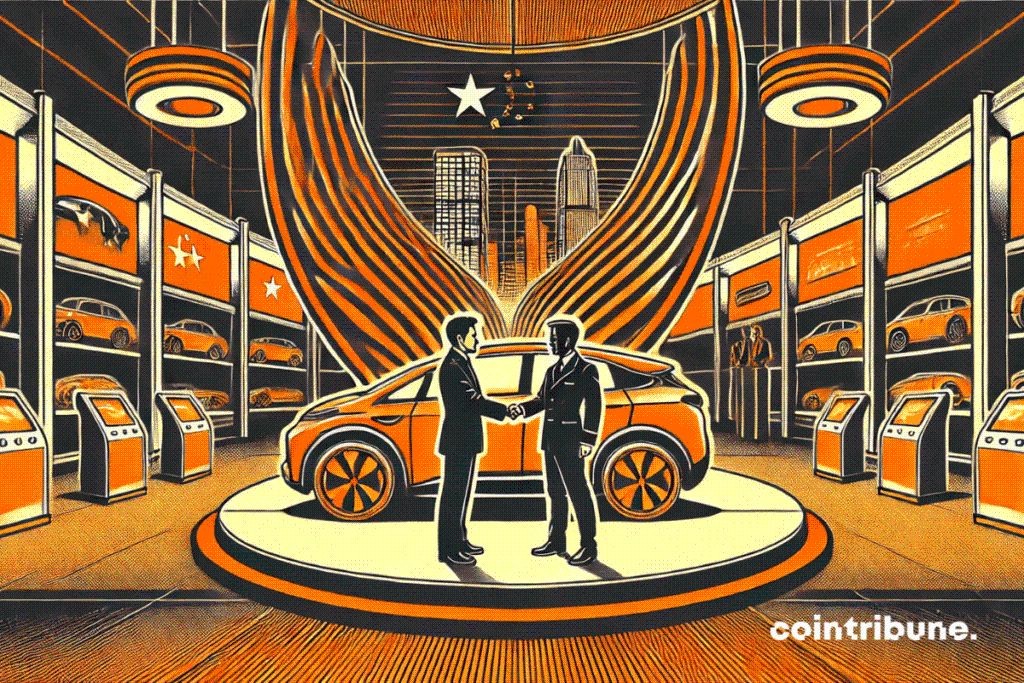Diplomatic Move : China And EU Begin Talks On EV
In the midst of a commercial battle, the European Union agrees to negotiate the removal of tariffs on Chinese electric vehicles. Fueled by massive subsidies, these low-cost models are disrupting the balance of the European market. This turnaround marks a turning point, as Europe, torn between industrial protectionism and ecological transition, opens up to a risky compromise. In a key sector, this rapprochement could reshuffle the cards between two rival powers, linked by competition as much as by interdependence.

The beginning of an unexpected trade dialogue
Beijing and Brussels seem eager to start a concrete dialogue on a subject that has until now been marked by confrontation. For several months, the European Commission has accused China of massively subsidizing its automotive industry, thus distorting competition to the detriment of European players.
These discussions, which are still in their infancy, are taking place in a climate of increasing diplomatic tension. The investigation launched by the EU last October into the trade practices of Chinese manufacturers such as BYD and Nio had foreshadowed a tariff escalation.
Beijing denounced a discriminatory initiative. However, the opening of negotiations seems to indicate a shared willingness to avoid a trade war with potentially heavy repercussions for both economies. Among the key points to note at this stage :
- The European Commission is investigating unfair subsidies granted to the Chinese electric vehicle industry ;
- The targeted manufacturers include several giants such as BYD, Nio, and SAIC ;
- Beijing has strongly opposed these accusations and denounced a violation of the principle of free trade ;
- The dialogue initiative aims to defuse a confrontation that could destabilize European markets.
A step towards a new economic balance
The framework of these discussions remains unclear, but their implications are already being scrutinized closely by industry players. The two economic powers have not yet detailed a timeline or the specific modalities of future negotiations.
However, the message being sent is strong. The mere consideration of tariff easing suggests that the European Union might reassess its approach regarding Chinese imports in a sector as strategic as electric mobility.
This shift in posture could reflect an awareness of the current balance of power. Chinese manufacturers have consolidated their technological lead in batteries and large-scale production.
By maintaining customs barriers, the EU risks depriving itself of a competitive offer, at a time when its climate objectives require an accelerated electrification of the car fleet. Conversely, a hasty withdrawal from protective measures could weaken European industries, which are still far from an economic balance against their Asian competitors.
In the longer term, this opening could reshuffle the market in Europe. If negotiations between the EU and China succeed, the massive influx of low-cost Chinese models could force historical players to deeply reassess their production and marketing models. This could also redefine industrial alliance strategies, with a potential rapprochement between European and Asian firms. Whatever the outcomes, the upcoming negotiations promise to be structuring for the future of the automotive sector in Europe.
Disclaimer: The content of this article solely reflects the author's opinion and does not represent the platform in any capacity. This article is not intended to serve as a reference for making investment decisions.
You may also like
Friday charts: The Marvin Minsky moment is here
Have markets been obsessing over the wrong Minsky?

Charles Hoskinson Reveals Exciting Plans for Lace Wallet’s XRP Functionality
In Brief Charles Hoskinson announces XRP functionality for Lace wallet. Integration aims to enhance multi-chain support and user experience. Upcoming NIGHT token distribution includes XRP holders.

Meme project BONK launches Meme coin issuance platform Letsbonk.Fun
